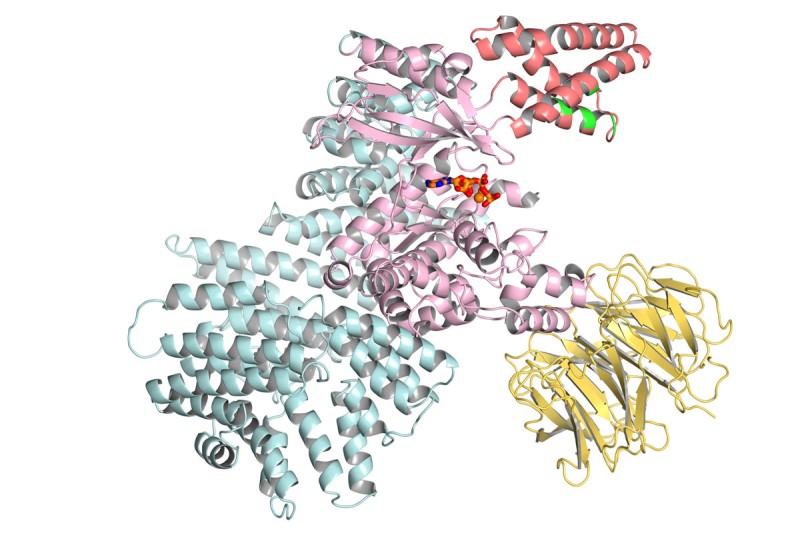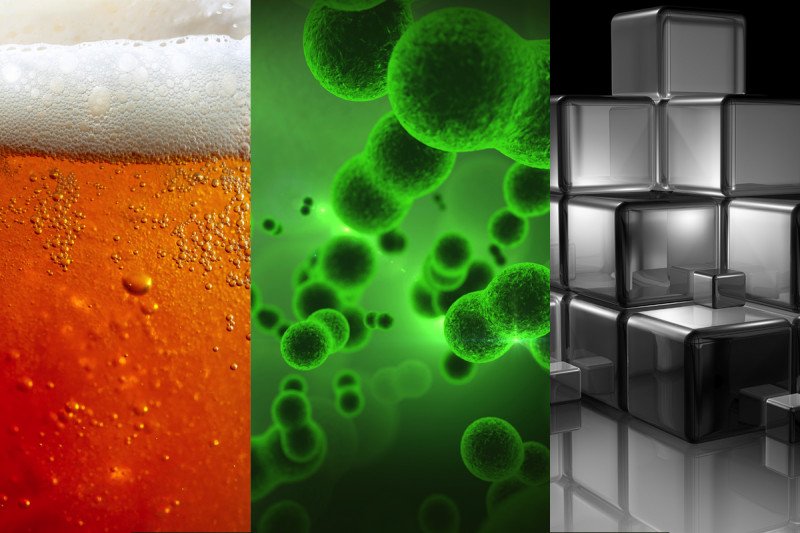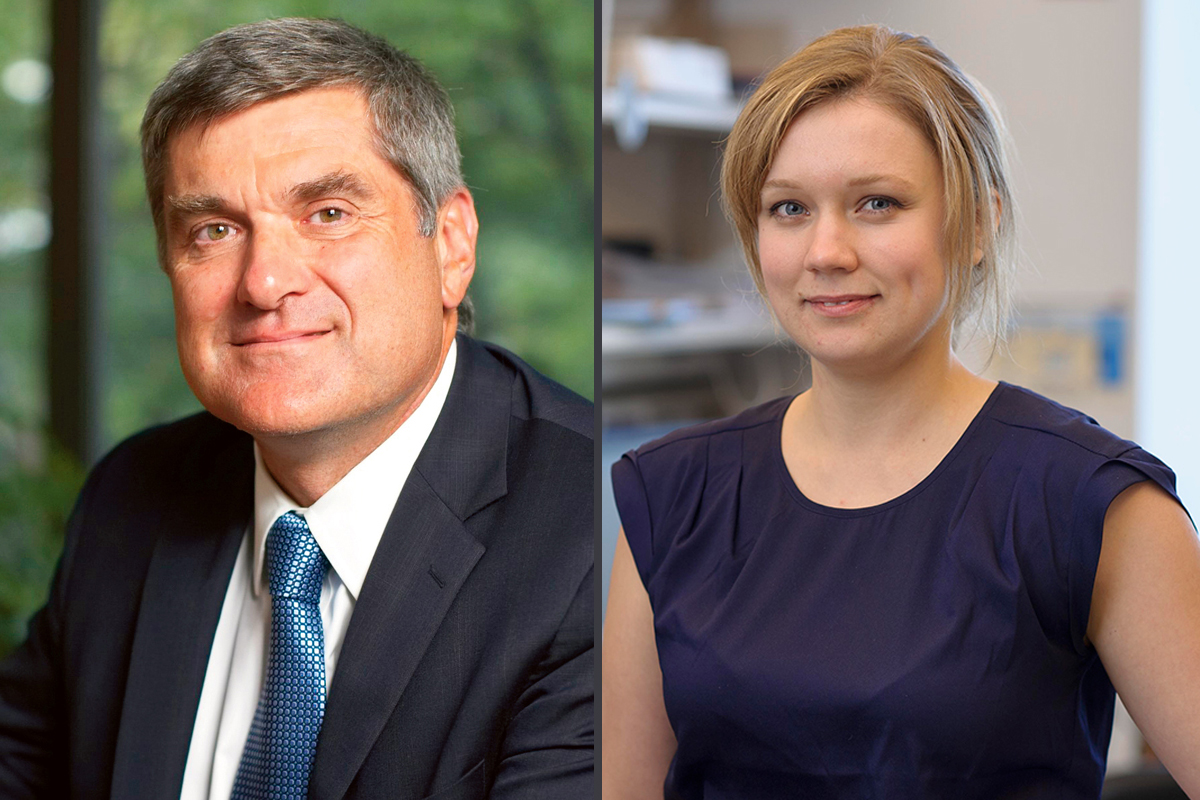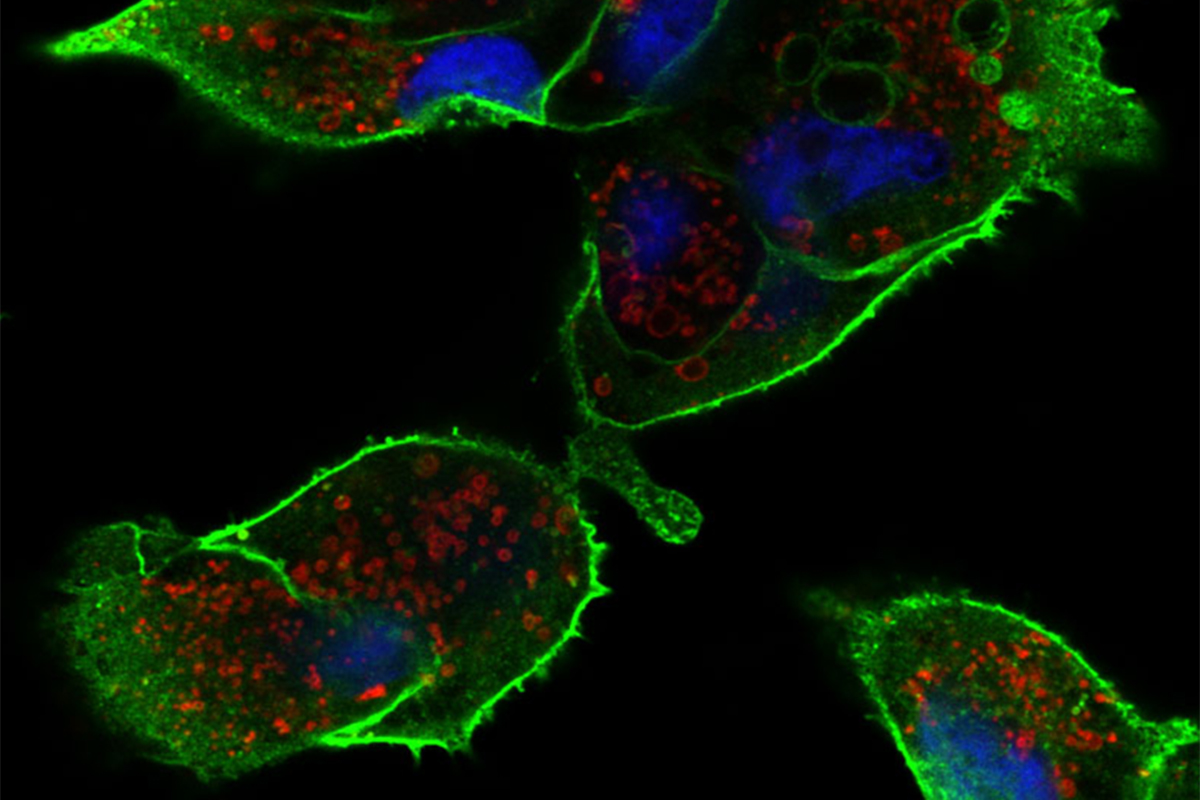Steve Julian, a radio host with KPCC in Los Angeles, was diagnosed with terminal brain cancer last November. He and his wife, Felicia Friesema, turned to social media for solace, support and the space to process their heartbreaking journey.
Rachael Myrow/KQED
The KQED podcast Love in the Digital Age explores "how technology changes the way we experience love, friendship, intimacy and connection." The most recent episode focuses on two people — a Los Angeles radio host and his wife — who have drawn great strength from their online communities and social media as they face his diagnosis of terminal cancer. You can listen to the podcast here.
Felicia Friesema had seen the signs of brain cancer before. Her husband, Steve Julian, wasn't just forgetting his keys on the kitchen counter, or having another of the myriad brain farts we often associate with middle age. He'd stop in the middle of a sentence, like he'd just hit a brick wall. And that was that.
"It wasn't that kind of gradual onset that Alzheimer's is," Friesema recalls. "It didn't sound or feel like dementia. This was so sudden — and it was very eerily similar to what happened to my aunt, my tia Gloria," Friesema says.
This time, the loved one with cancer was her husband.
Over the years, they've built a cozy life together in a sweet, spacious home in Highland Park, a neighborhood in northeast Los Angeles. She's head of marketing for
Foothill Transit. And Julian is one of a handful of trusted voices helping Angelenos navigate the freeways every day, as morning anchor for a public radio station, KPCC-FM. In his off hours, he'd been active for years in local theater as an
actor, writer and director.
Steve Julian and Felicia Friesema in easier times.
Courtesy of Felicia Friesema
Now, he was having trouble navigating his way through a sentence.
"Technically, all tumors are operable," Friesema explains. "The question that comes into play is, what are you willing to sacrifice in order to get it out? The position and location of his tumor is such that you would have to completely destroy a lot of healthy brain tissue in order to remove it. You would be creating a situation of paralysis, major cognitive dysfunction, irreversible brain damage — and, ultimately, for possibly very little reward. There's no way of skirting it: I was looking at his death."
Around Thanksgiving last year, Julian was diagnosed with terminal brain cancer at the age of 57. They decided not to try to stretch his last months with chemo and radiation therapy. Julian has less time than he might have, but he can eat what he wants, sleep with their dogs, and squeeze the last juice out of the days that remain with his wife.
She's taking time off from work, thanks to a compassionate boss. In the 20 or more hours a day that Julian now sleeps, Friesema takes care of everything else — the meals, the housekeeping, the medicine, insurance and the emotional management.
Of course, friends and family are helping. Larry Mantle, Julian's dearest pal, comes over for company and a wee dram of whiskey. Friends have delivered dozens of lasagnas to the doorstep and whipped out their credit cards to cover what insurance doesn't. But at the end of the day, Friesema is alone. And every morning, there's a little bit less of Julian.
Reaching Out Online
It was a few months into his diagnosis when we noticed
Felicia Friesema's journal on
Caring Bridge, a website designed to help families and friends of someone who is ill give updates and get them, and offer and receive encouragement.
We recognized a kindred spirit in Friesema — someone else in the special club of those who have lost or who are losing a close loved one. We had to fly down to Los Angeles and meet this woman who wrote so deeply and thoughtfully, and with such compassion, about a journey no one chooses.
"I know that this is treacherous ground we walk on and that time is of the essence. We wake up to the juxtaposition of joy in another day together and terror at what may come.
"There is no detailed prognosis yet. But we do know that there is no outcome we like. And I have never been so scared. But I have also never been so completely full of love for him."
That was Dec. 2, 2015. At that point, Steve Julian could still help his wife craft a communique to friends:
"I miss being at work and in the studio. I miss being with all the people I love at KPCC. I'm still good at traffic. We chose UCLA for the surgery and treatment, and navigating to the westside can be tricky. The tumor can take away what I had for dinner, but not my memory of the traffic jams I've sat in.
"I am sad. I feel the unfairness of all of this. But I also feel the love for my wife, which grows every day as she balances the technical work of our affairs with the emotional work of our daily life. Like making sure I eat three solid meals. And I mean really solid. Four, sometimes. She tells me I'm loved about a hundred times a day — I remember a few of them. Larry [Mantle, host of
Air Talk], my brother in all but blood, is a rock for both of us and has been by our side from diagnosis until now."
Many people facing down the gun barrel of something this awful retreat into family. But Friesema reached out from the beginning to friends online.
"We kind of had to," she explains. "We've kind of got a unique and peculiar situation. I mean, Julian's a very popular radio host in a very large market. He's also incredibly involved in the theater community here. He also used to be a cop. So, you have these seemingly disparate communities that he's connected to. That's thousands of people — his most intimate friends all the way down to the casual listener."
Courtesy of Felicia Friesema
From the peace and quiet of their home on the hill, when Julian is sleeping, Friesema can write about all the medical details that would exhaust her if she had to repeat them to people in one individual conversation after another.
Friesema also uses the blog to process what's happening in her world, "to take this jumbled puzzle-piece of Post-it notes and ideas and thoughts and put them together into something that is like, 'Oh! OK.' "
"Usually, I don't know when I'm going to conclude until I start writing," she says, "and by the end of it, I'm like, 'Oh, that's my "aha" moment. OK. All right.' "
On Facebook, for a smaller, closer audience, Friesema shares bite-sized missives from her daily journey — proof the bees in the backyard are making "So. Much. Honey." Or her desperate wish that MRI machines played Brian Eno instead of frightening clicks and buzzes. Her rage against the insurance company, or her pride in yet another crazy, beautiful meal made for Julian.
And then there are the jokes. If anything, staring down death has heightened the couple's sense of humor.
"Fun with brain cancer:
"Steve: Jen!
Me: Yeah, babe (knowing full well he was calling for me).
Steve: Oh, I'm sorry. I just called you Jen.
Me: Yeah, I know, babe. It's OK. What's up?
Steve: (tells me some stuff he needs).
Me: No problem. By the way (smiling), I'd like to know who the hell Jen is.
Steve: (chuckles) So would I!"
The love has come pouring in from all corners. By Jan. 4, Friesema reported that more than 100 people had made deliveries, run errands or completed tasks around the house.
Steve Julian of KPCC in Los Angeles gets a studio named after him, and a great big hug from President and CEO Bill Davis.
Courtesy of Felicia Friesema
People "are grateful for being included," Friesema says, "or grateful just to know that Steve's OK for now. Or they're grateful for an opportunity to help. I'd been crying so hard just a few days ago. I just couldn't stop. I was so sad and so dejected. And, at the end of the day, my status update on Facebook was, 'There just aren't enough tissues in the box.' So, the next day, what arrives on my doorstep but a case of Kleenex. And the message was, 'We know that this isn't enough, but hopefully it helps.' "
"One of the things we've been focusing on," Friesema says, "is making sure that every day is about some kind of pleasure — some kind of happy moment, some laugh, something in there that actually makes the day not a routine of caregiving."
Friesema sighs. "You know, something that reminds us that there are all these wonderful pieces to life and that living doesn't stop with a cancer diagnosis."
What remains online from this journey is a whole lot more than the testament to the love that people have for Steve Julian and Felicia Friesema. It's a social network — in the best sense — that will be there for Friesema, waiting to engage and respond anytime she wants.
This story was produced by The California Report at KQED, with production support from California Report's LA Bureau Chief Steven Cuevas.












